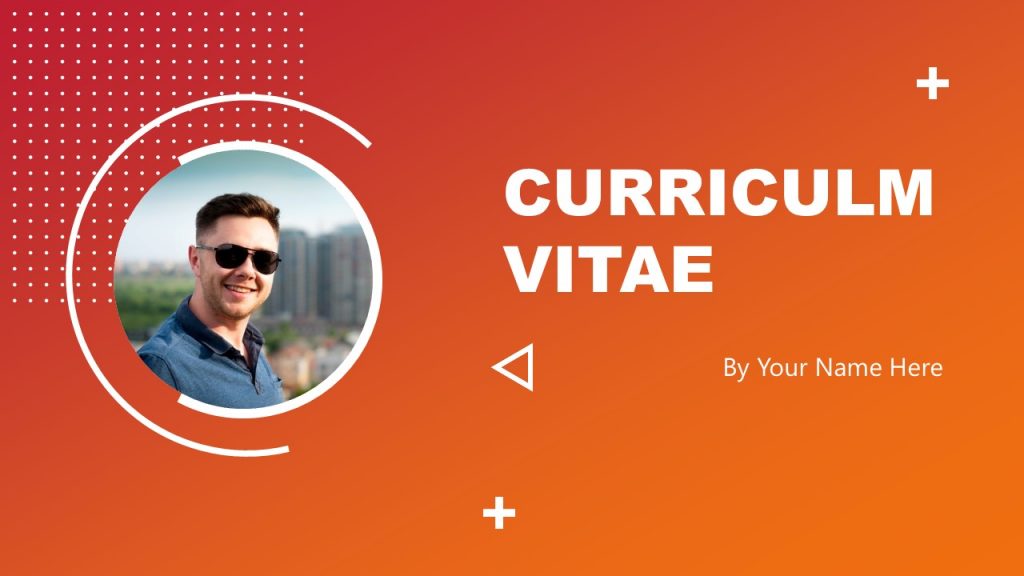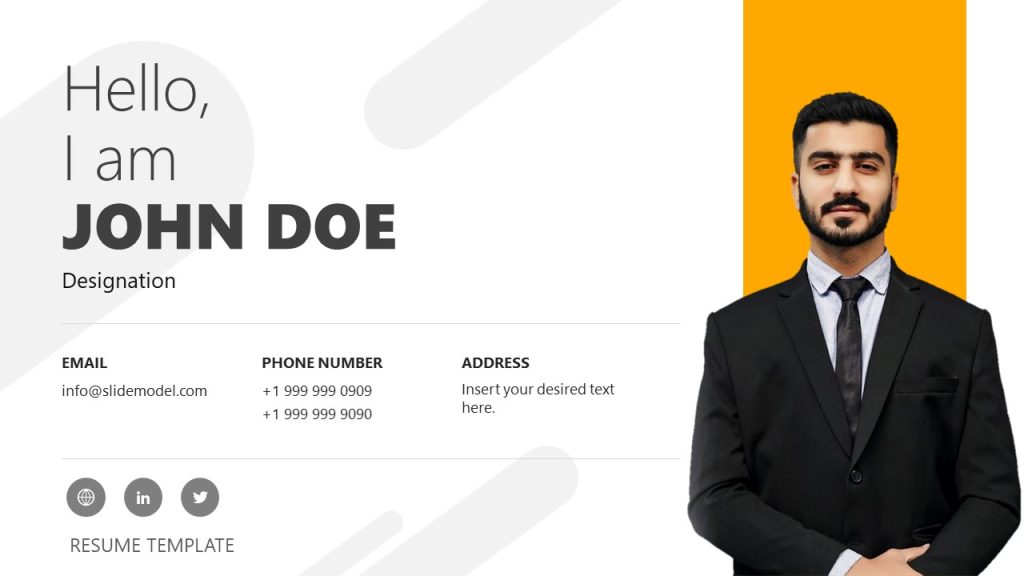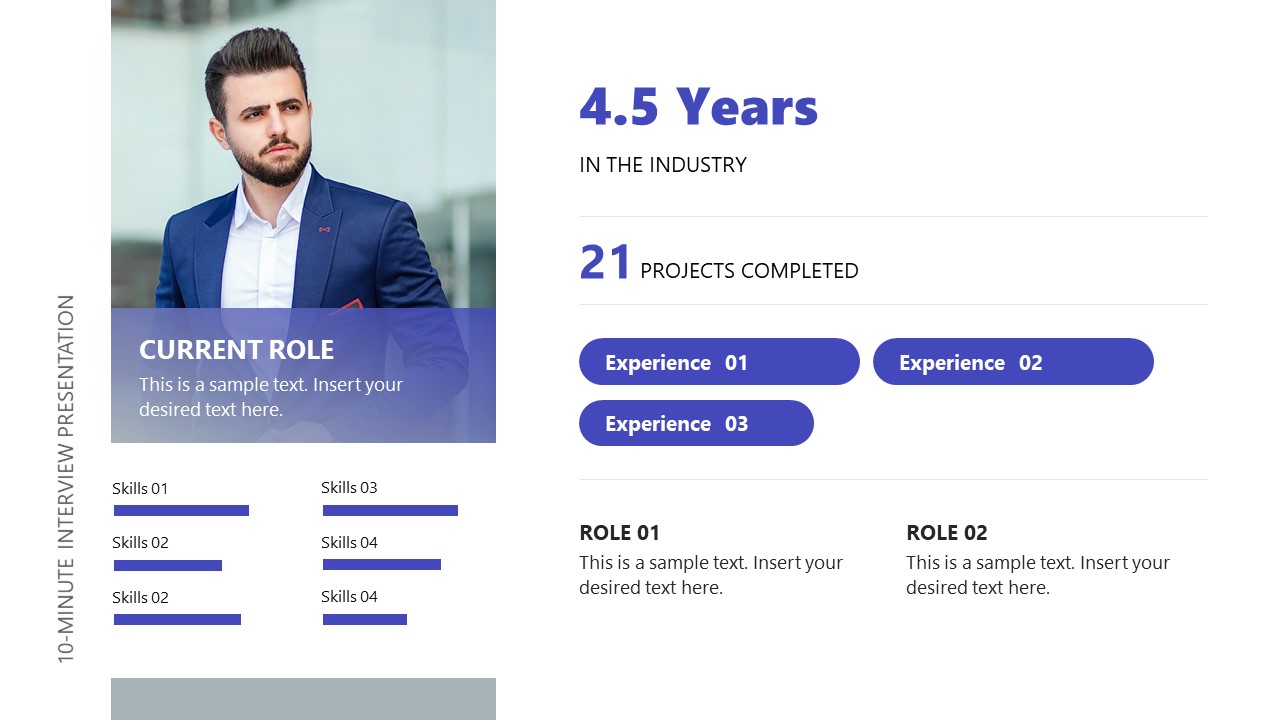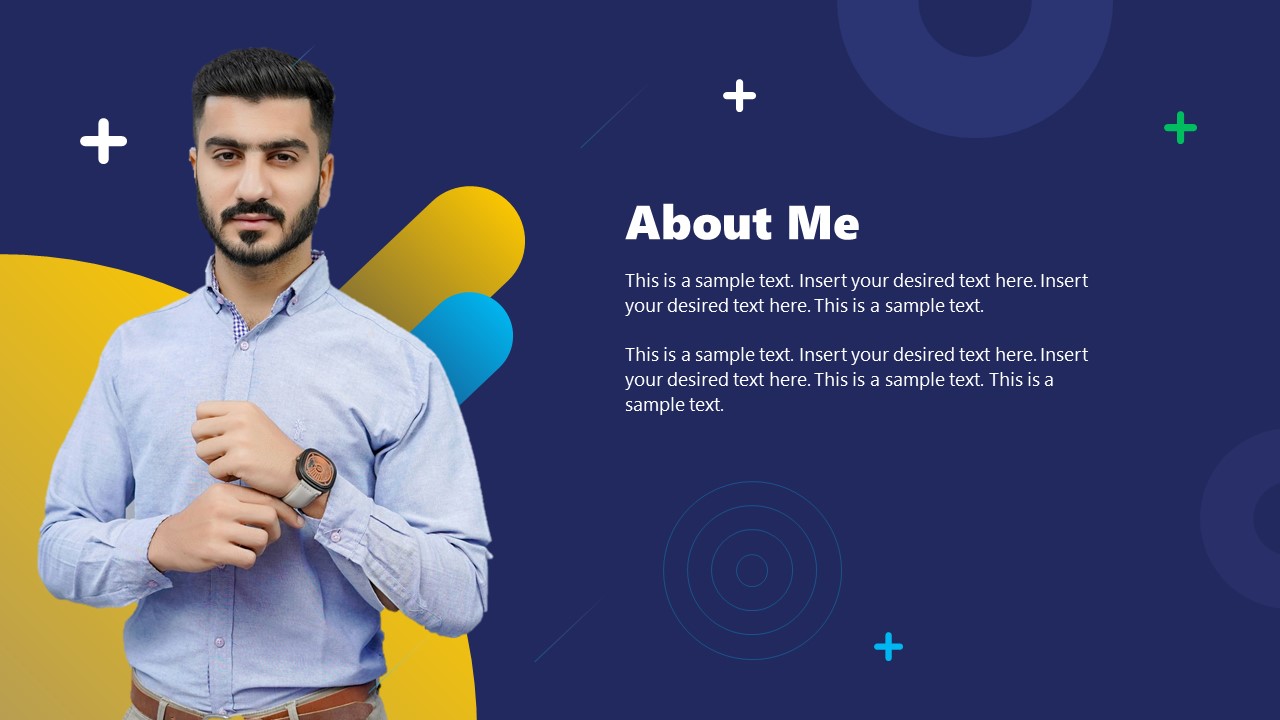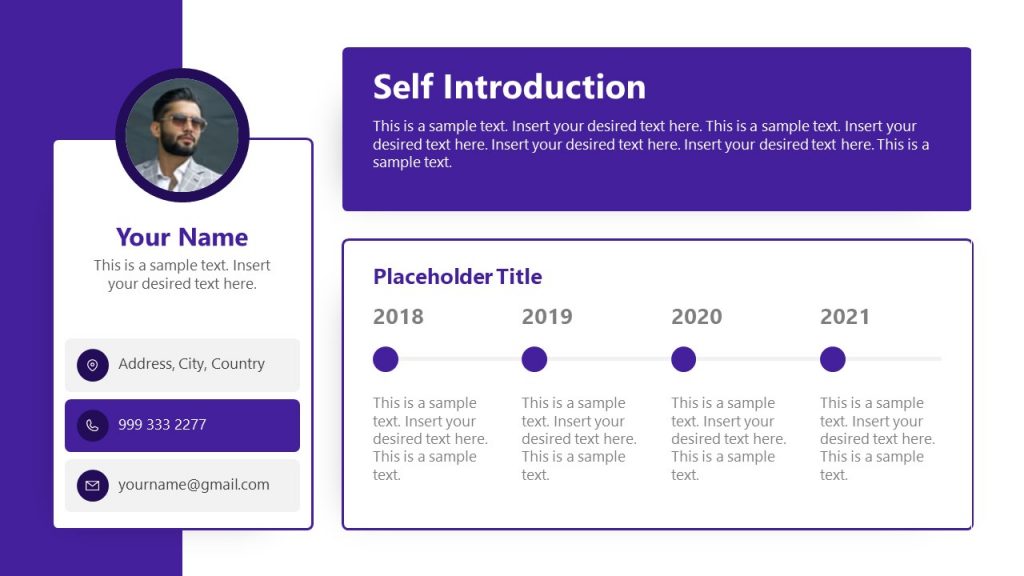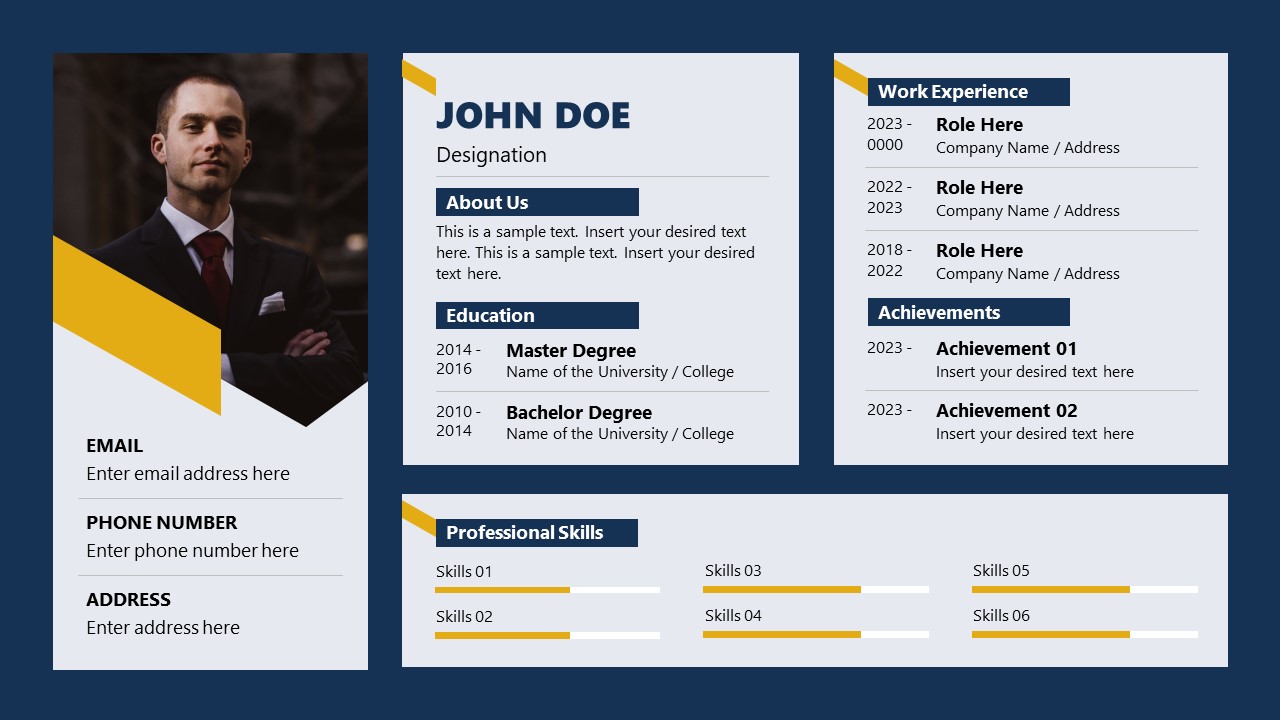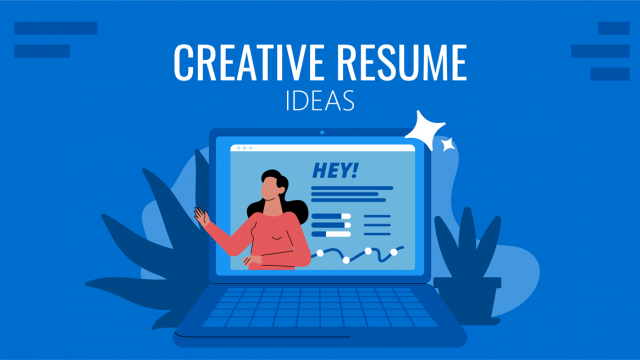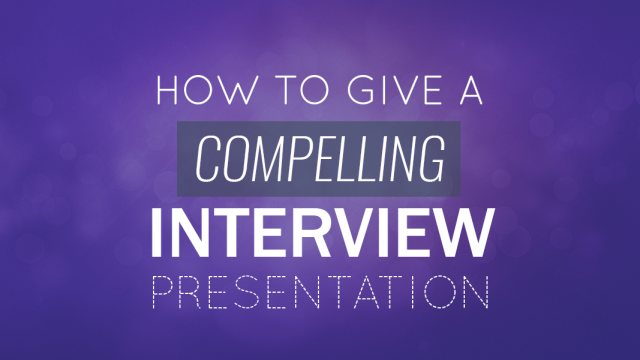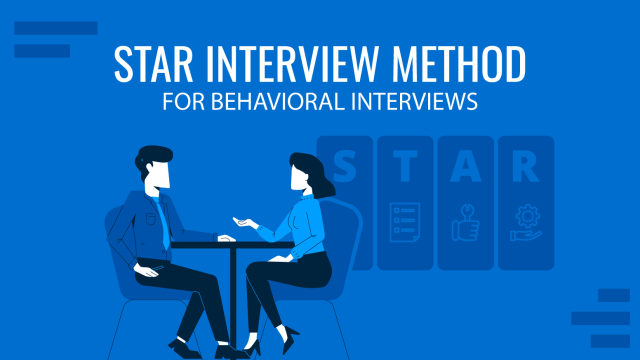
Are you planning your upcoming job interview? If so, it’s important to stay in touch with what recruiters require to showcase your abilities and professional experience in the best format possible. Interview portfolios become a vital asset for any aspiring candidate, as they allow potential employees to showcase their career information in a comprehensive format, much more detailed than traditional curriculum vitae presentations.
In this article, we will learn how to make an interview portfolio in terms of content and maximize our chances by using PPT templates to create breathtaking graphics.
Table of Contents
- What is an Interview Portfolio?
- Structure of an Interview Portfolio
- Personal and Contact Information
- Resume and Cover Letter
- Proof of Qualifications and Certifications
- Work Samples
- Professional Recommendations and References
- Achievements and Awards
- Graphics in Interview Portfolios
- How Do You Make a Portfolio for a Job Interview Using PowerPoint
- Regular Updates and Maintenance of the Portfolio
- Final Words
- References
What is an Interview Portfolio?
An interview portfolio is a collection of things that show off your skills and achievements. Usually, when we hear portfolio, we think of artists with big black folders showing their artwork. But now, portfolios are used in many different fields. It is a way to show who you are as a professional. It is like a record of all the good things you have done at work or in school [1]. It includes tangible evidence of your accomplishments and presents what you have achieved. It acts as proof of your ability to acquire new skills and knowledge.
An interview portfolio goes beyond a traditional resume as it offers a deeper insight into your capabilities. In a career development plan, creating a portfolio helps you get ready for interviews because it makes you think deeply about your career experiences and achievements [2]. When you’re getting prepared for an interview, this process helps you pick out specific experiences that have taught you essential skills for the workplace. At the same time, developing an interview portfolio allows you to see how well your qualifications match the job requirements of your interest. While expanding your interview portfolio, choosing work samples and skills that show you are a good fit for the job you want is important. You can even make different portfolios for jobs you’re interested in [2]. By reflecting on various skills for a job, you might realize there are some skills you need to work on. A portfolio helps you to figure out exactly which skills you need to improve. This can enhance your confidence during the interview, and you can talk more confidently about your goals.
Structure of an Interview Portfolio
When creating a portfolio for a job interview, it’s essential to include various materials that collectively highlight your skills.
- Resume or CV
- Work Samples
- Certifications and training
- Transcripts
- Testimonials and personal branding elements
- Professional Recommendations

Depending on your field, you can include specific items in your portfolio to show what you know and can do accurately. Your portfolio can end up being quite significant because of all the things you include. However, it is not appropriate to go through every single item with the employer during an interview. A better idea is to pick out certain things from your portfolio to make a smaller version just for the interview. This smaller portfolio can be shown during the interview to prove skills relevant to the job.
Personal and Contact Information
When making a portfolio for a job interview, provide updated contact information. This includes your full name, professional email address, phone number, and LinkedIn profile URL. A professional headshot also enhances your portfolio by giving it a personal touch. Additionally, you can also add a concise personal branding statement that can establish your unique identity as an applicant.
Personal branding has a significant impact on career success. 85 % of hiring managers say that a job candidate’s personal brand affects their hiring choices [3]. Your personal brand should present what you’re good at, build trust, and show what makes you unique in your current or desired field. A well-written personal brand can decide whether you’re a good fit for the job you’re applying for.
To understand it better, we will use the job interview portfolio of an IT candidate as an example.
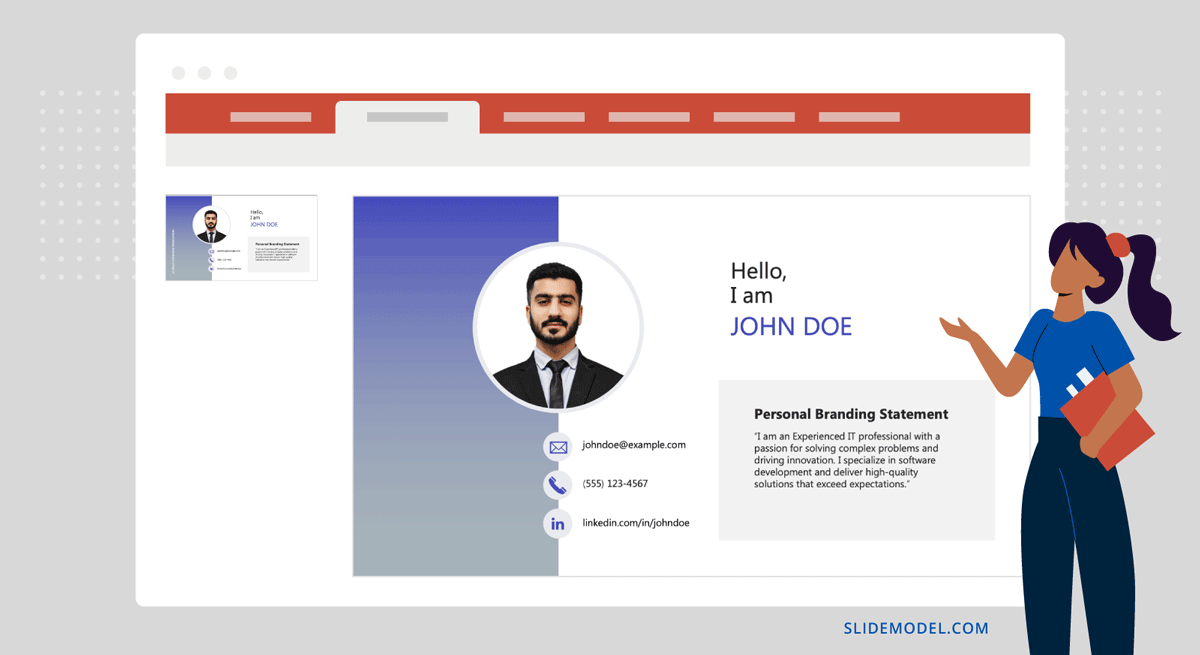
Resume and Cover Letter
Another vital element of your interview portfolio is your resume and cover letter. A resume summarises your career path, focusing on essential skills, experiences, and accomplishments. On the other hand, a cover letter is a personalized message expressing your interest in a particular job. Both are submitted together.
In a resume, you should highlight your information in an organized and professional manner. At the same time, you have to customize your cover letter based on the specific requirements of each job you are applying for. Your cover letter highlights how your background aligns with the job posting requirements. This includes explaining your interests in the company that will contribute to its success [4]. Therefore, it would be great to elaborate on relevant points from your resume and express how you would be a valuable addition to their team.
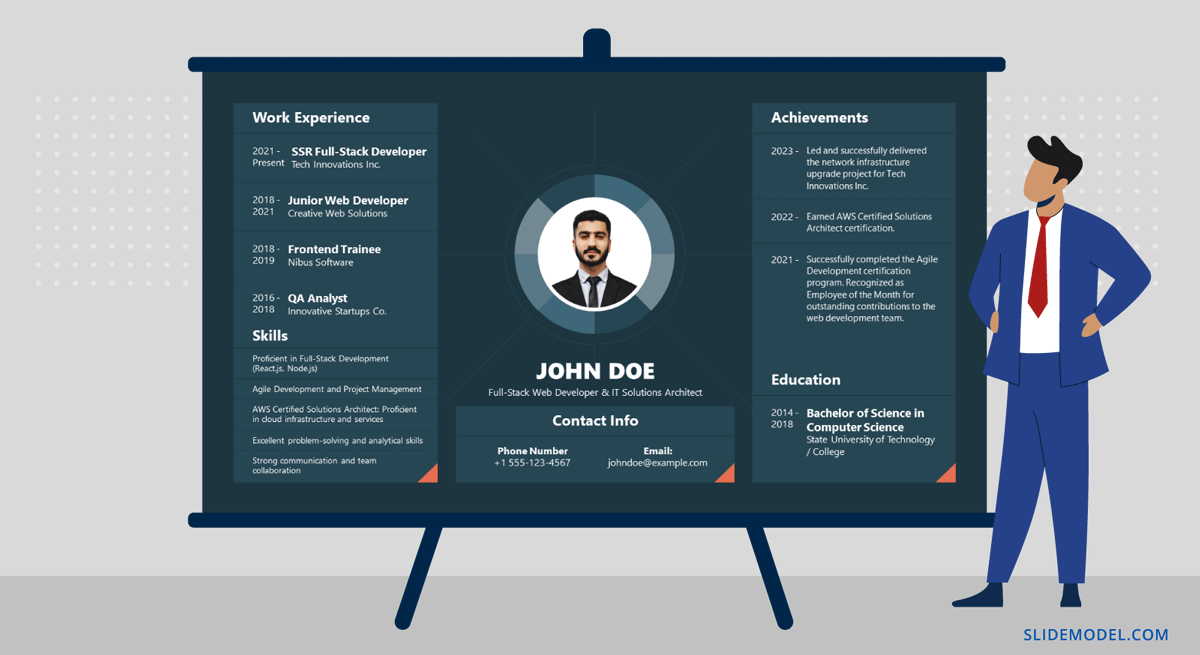
Proof of Qualifications and Certifications
Evidence of your qualifications and certifications enhances your credibility as a potential candidate in your interview portfolio. Whether it is a bachelor’s degree, a certificate, or a professional endorsement, they present your dedication in a relevant field. For instance, in the technology sector, certifications like CompTIA A+, Cisco CCNA, or AWS Certified Solutions Architect hold great value in highlighting specialized abilities. Make sure to truthfully present your qualifications and furnish any required paperwork to support your claims.
For example:
John’s Portfolio includes his Bachelor of Science in Computer Science and certifications in Agile Development and AWS Certified Solutions Architect. These credentials validate his expertise in software development and cloud computing, making him a strong candidate for IT infrastructure or application development roles.
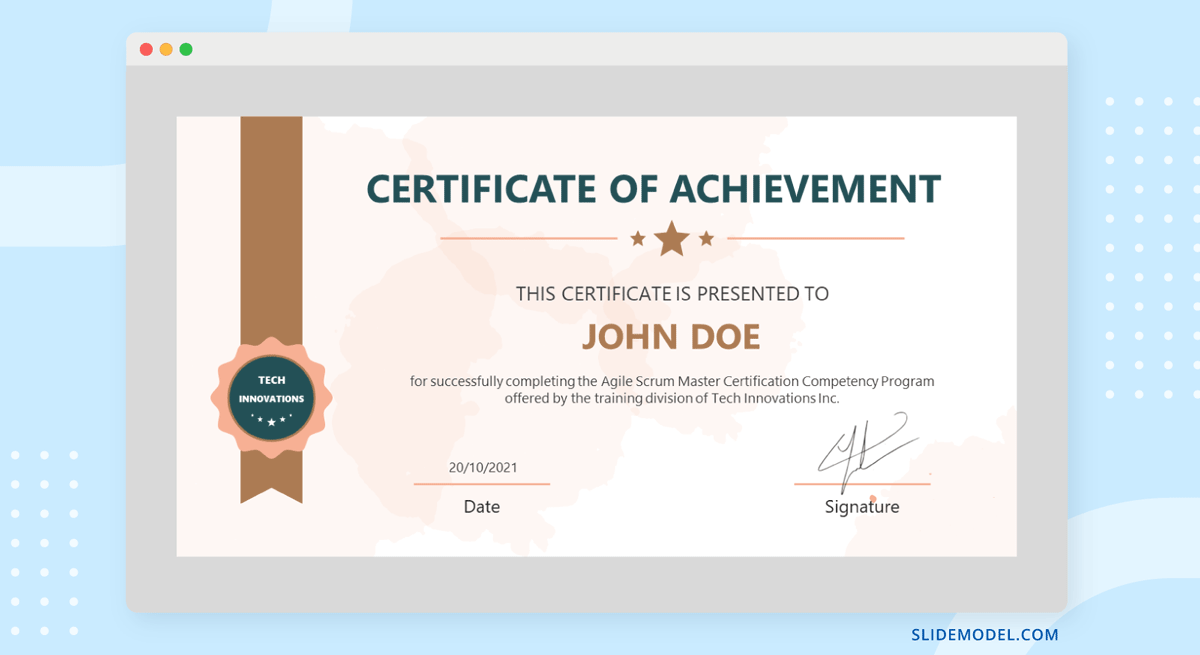
Work Samples
Work samples also portray your capabilities and accomplishments in your interview presentation. We suggest choosing projects or assignments that show your skills and achievements relevant to the position you’re applying for. Provide a reflection statement for every sample included in the portfolio [2]. This statement should briefly describe the sample item and the context in which it was created. Additionally, the reflection statement should offer a detailed list of the competencies developed by the sample. This part of the reflection is crucial as it details the specific skills and abilities highlighted by each portfolio element. Thus, a work sample is a valuable tool in the interview process.
Software developers may include code samples or links to GitHub repositories highlighting their coding proficiency. Network administrators would select diagrams or documentation outlining infrastructure projects they’ve managed. It is essential to annotate each work sample to provide context and highlight your contributions.
For Example:
John’s work samples include a web application he developed using React.js and Node.js, demonstrating his proficiency in full-stack web development. He also includes a case study detailing a network infrastructure upgrade project he led, highlighting his ability to design and implement scalable IT solutions.
Professional Recommendations and References
A strong endorsement from a trusted source can significantly enhance your credibility and make a positive impression during the hiring process. Compared to references, recommendations are more in-depth [5]. A reference agrees to provide you with a positive recommendation for a job or program.
You can choose references who are familiar with your recent work. They can provide specific examples of your strengths and accomplishments. You must obtain permission from each reference before including their contact information in your portfolio. An excellent option for a reference could be your current supervisor, colleague, or professor from your college [6]. It is important to present references organizationally, including their name, job title, company, and contact information.
For Example:
John’s interview portfolio includes positive recommendations from his previous supervisors and colleagues, highlighting his strong work ethic, technical expertise, and collaborative nature. One of his supervisors writes,
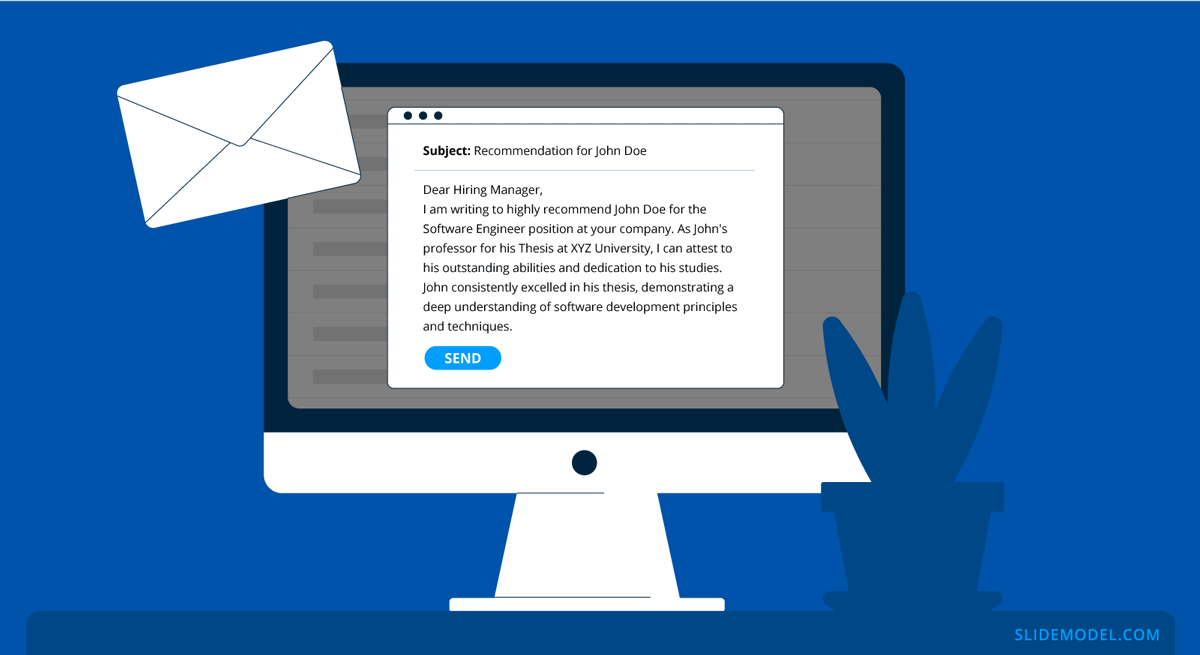
Subject: Recommendation for John Doe
Dear Hiring Manager,
I am writing to highly recommend John Doe for the Software Engineer position at your company. As John’s professor for his Thesis at XYZ University, I can attest to his outstanding abilities and dedication to his studies. John consistently excelled in his thesis, demonstrating a deep understanding of software development principles and techniques. His practice projects, like designing a complex e-commerce platform, showcased his exceptional coding skills and problem-solving abilities. What sets John apart is his proactive approach to learning and his eagerness to tackle new challenges.
Beyond his technical skills, John is an excellent communicator and a collaborative team player. He consistently contributed valuable insights during group projects and mentored his peers to help them improve their coding abilities. I do not doubt that John’s combination of technical expertise, passion for software development, and strong work ethic make him an ideal candidate for the Software Engineer position at your company. I wholeheartedly endorse him for this role and believe he will be a valuable asset to your team.
Please feel free to contact me if you need further information or clarification regarding John’s qualifications.
Sincerely,
Prof. Jane Smith
Assistant Professor of Computer Science
XYZ University
Email: janesmith@xyzuniversity.com
Phone: (123) 456-7890
Achievements and Awards
Add it to your interview portfolio if you have succeeded in your field. Highlighting your recognitions or awards will prove your value. Achievements such as receiving industry certifications or being recognized for outstanding performance contribute to your credibility in the field. You can include achievements and awards to reinforce your qualifications for the job position.
When explaining achievements and awards, focus on their relevance to the job position and how they describe your capabilities and accomplishments. Highlight any specific skills that were instrumental in earning the recognition. You can also explain how they align with the requirements of the role you’re applying for. Whether it’s a technical accomplishment, leadership recognition, or customer service award, emphasize its impact on your professional development and your ability to contribute effectively to the organization.
For Example:
John’s interview portfolio features several notable achievements and awards, including winning first place in a regional coding competition and receiving the “Employee of the Year” award at his previous company. These achievements underscore John’s technical prowess, problem-solving abilities, and leadership skills, which are highly relevant to the Senior Software Engineer position he’s applying for at ABC Tech. By showcasing these recognitions, John reinforces his qualifications and positions himself as a top candidate.
Graphics in Interview Portfolios
They choose the proper portfolio format, whether physical or digital, which is crucial in making a favorable impression during an interview. However, it also depends on the hiring manager or the nature of the job when deciding on the format. Physical portfolios leave a strong impression and provide a hands-on experience. On the other side, digital portfolios offer flexible and simple sharing. The selection depends on the expectations of the industry and company culture.
Regardless of the format chosen, ensure that your interview portfolio maintains a neat, organized, and professional appearance. We suggest using high-quality materials for physical portfolios, such as a professional binder or portfolio case. The applicant must ensure that all documents are well-organized and easy to navigate. For digital portfolios, a visually appealing layout is essential. All files should be appropriately labeled and easily accessible.
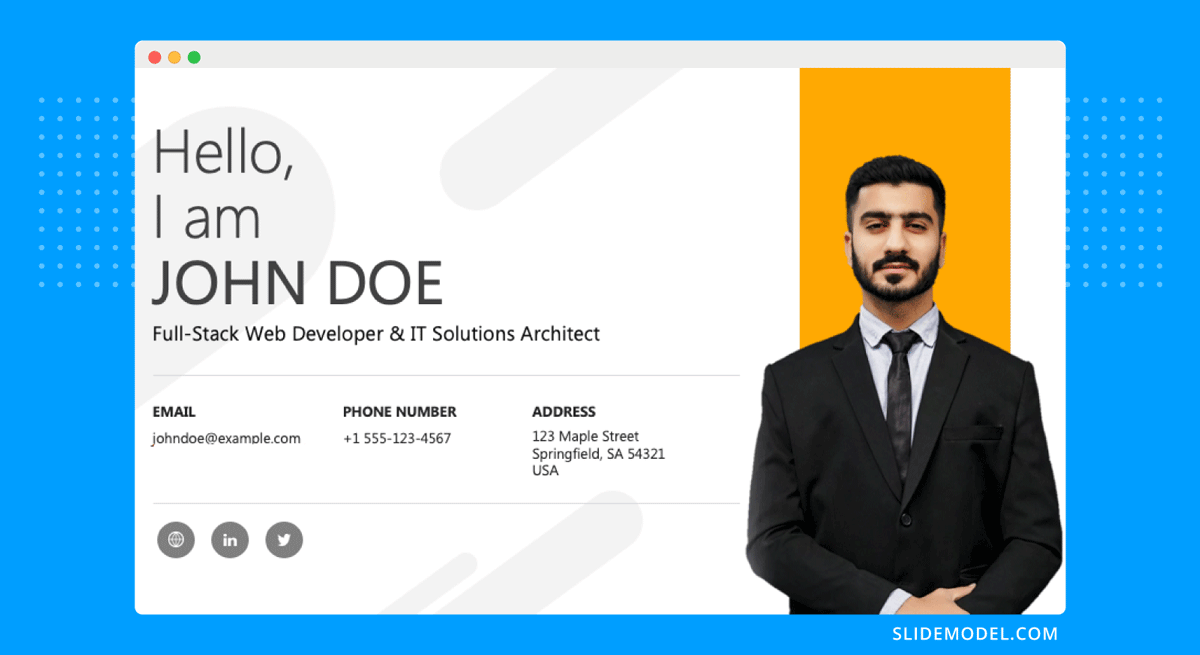
How Do You Make a Portfolio for a Job Interview Using PowerPoint
Using PowerPoint templates can be an effective way to create an attractive digital interview portfolio. You can choose a template that complements your content and goes well with your personal branding. Whether it is a PowerPoint or Google Slide Template, you can easily customize it to include your name, contact information, and any relevant branding elements. However, you must ensure readability and avoid overcrowding slides with too much text or graphics. Keeping the design clean and straightforward gives a professional look.
In order to save time and effort, we’ll give you a list of the best-suited Interview Portfolio PPT templates.
Tips for Presenting the Portfolio During an Interview
When presenting your portfolio during an interview, prepare in advance to ensure a smooth and professional delivery. There are a few tips to remember;
- Practice discussing each section of your portfolio and be ready to provide context and insights into your work samples, achievements, and qualifications.
- You have to be early to the interview to set up your physical portfolio
- If you’re using a digital portfolio, check whether it is accessible on your device.
- Confidence is also necessary when discussing your materials, and be prepared to answer any questions as needed.
Regular Updates and Maintenance of the Portfolio
It is crucial to regularly update your interview portfolio to maximize its impact during the job search. As your skills, experiences, and achievements progress, you may keep incorporating these developments into your portfolio. This will enable you to display your qualifications to prospective employers effectively. Besides, consistent updates will guarantee that your portfolio remains a valuable asset for highlighting your proficiency.
Review your resume, cover letter, work samples, qualifications, and achievements periodically to ensure they accurately reflect your current skills and experiences. You can seek feedback from mentors, peers, or industry professionals to gain insights into areas for improvement and make necessary changes.
Final Words
Creating a professional portfolio for an interview is a strategic investment in your job search success. From perfecting your CV and choosing suitable samples of your work to showcasing your portfolio with poise during interviews, each stage is crucial in making you a unique applicant in the eyes of potential employers. Remember to regularly update and maintain your portfolio to ensure its relevance and effectiveness in the ever-evolving job market.
References
[1] Interview Portfolios. https://www.sph.umn.edu/current/careers/students/resources/interviewing/interview-portfolios/
[2] Simmons, A. & Lumsden, J. Preparing a Portfolio. https://career.fsu.edu/sites/g/files/upcbnu746/files/Preparing%20a%20Portfolio_0.pdf
[3] Joubert, S. (2024) Tips for Building Your Personal Brand, Graduate Blog. https://graduate.northeastern.edu/resources/tips-for-building-your-personal-brand/
[4] Work on my Resume, Cover Letter, and Portfolio. The WCSU Career Success Center. Available at: https://www.wcsu.edu/careersuccess/resumes/ (Accessed: 15 March 2024).
[5] https://ischool.sjsu.edu/career-blog/do-you-need-reference-or-recommendation-heres-how-tell
[6] References and Recommendations. https://career.engr.psu.edu/students/basics/references.aspx
